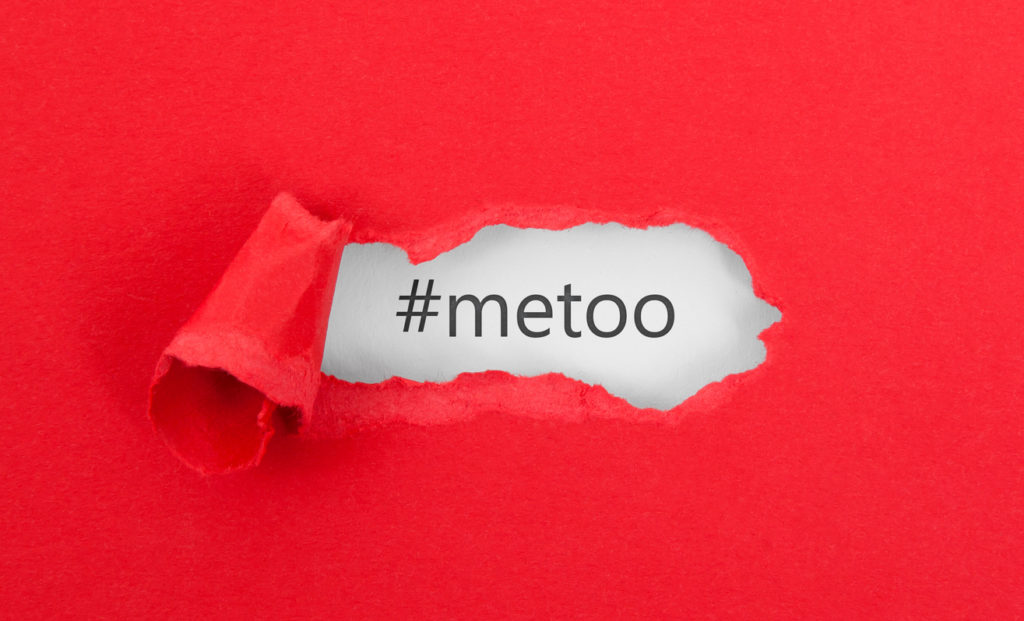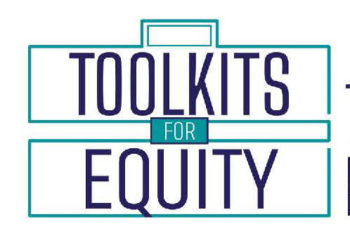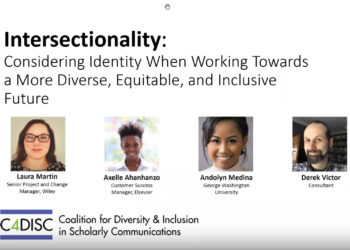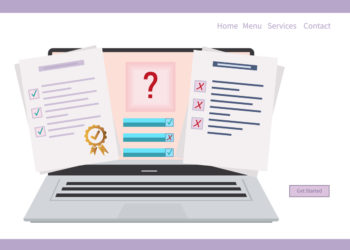Author’s note: It gives me no great pleasure to revisit this post – I’d like nothing more than a world in which we have no need to talk about this topic again. But the steady stream of high-profile cases over the past few years makes it clear that harassment of and violence against women is still very much part of our culture – including that of our workplaces. Andrew Cuomo’s case is perhaps the most pernicious, as his behavior was far more the “garden variety” harassment that so many women experience and is thus more easily dismissed.
We have definitely seen shifts in the right direction, breaking a longstanding and deafening silence and exposing how predators in senior influential positions abuse their power to harass, humiliate, and bully. The #MeToo movement has contributed to a significant increase in public awareness of the scale of the problem — and a noteworthy acknowledgement from systems of power – including universities and organizations – that this behavior must be eradicated. Employers are no longer as reticent to deliver harsh penalties to high-profile or high-performing offenders (as we’ve seen recently in our own world with the firing of prominent biologist David Sabatini by the Howard Hughes Medical Institute).
But not all progress has been positive. There has been a backlash against women who choose to come forward, a phenomenon we saw quite clearly in the case of Christine Blasey Ford. (This concern about failure of due process is one reason why HHMI’s careful and independent review of David Sabatini is so important.) But there has also been a different kind of backlash in the workplace. It was assumed that women would benefit from bringing these issues to light, but recent research suggests not. The men surveyed are markedly more reluctant to hire attractive women, to hire women for jobs involving closer interpersonal interactions with men, and to have one-on-one meetings with female colleagues. This is a clear loss for working women. Travel, mentoring, and networking opportunities aren’t niceties – they’re integral to how work functions and to career development. Excluding women simply isn’t a legitimate response to our demands that we should no longer have to tolerate discrimination or harassment in the workplace.
So, what can you do? Over three years later, I think that my advice below remains relevant. All of our organizations should have clear policies and complaint procedures – make sure that yours does and if not, demand one. Provide the right training, such as bystander-intervention and manager training — these are far more effective than most anti-harrassment training. Talk to your employees and coworkers about harassment – provide guidance on navigating harassment and make sure employees know that you will back them up. Above all, we need to focus on establishing and maintaining a respectful culture – especially our most vulnerable employees – if we are to reach our goal of true workplace equity for all.
Breaking the Silence: the #MeToo Moment in Scholarly Communication
Pretty much anyone reading this column has likely been shocked and disgusted by the slew of revelations of sexual harassment and abuse by high-profile men over recent months. The women reading this column will not have been entirely surprised. (For the men reading: there is likely a natural fear around this discussion, but I hope you will read on. It has been as difficult for me to write as it may be for you to read.) Yet the response so far from publishing has been a resounding silence – can we pat ourselves on the back and assume that our enlightened, majority-women industry doesn’t have a problem?

Not so fast – for many women in publishing, these stories of harassment and discrimination are sadly and painfully familiar. My first encounter was just 5-6 months into my first job as a publicity assistant at Blackwell when I started receiving sexually explicit, middle-of-the-night phone calls from an Oxford don whose book I was promoting. I felt terrified, and guilty – what had I done to encourage this? It took me a number of weeks to find the courage to share this with the appropriate editor (who, to his credit, dealt with it swiftly and definitively). And then there was the colleague who took to emailing me regularly with questions about my underwear. And the author who groped me in the elevator. And the colleague with whom I always found myself doing up an extra button as his gaze was fixed permanently some inches below my face.
Over the past 30 years I’ve learned to navigate this terrain pretty effectively. That’s partly because I’ve learned what to avoid – for example, as an acquisitions editor I knew which authors were “safe” to meet for drinks or dinner, and which were better managed in daylight with people around (calculations I’m sure never entered the heads of my male colleagues). But it’s also true that as my role has become more senior and prominent, I’m less vulnerable than I was early in my career. This is, after all, all about power.
The point of sharing this is not to suggest that I’ve been especially unlucky, but rather to illustrate the run-of-the-mill kind of harassment that so many women experience as part of their professional lives. Whatever we may want to think, the data shows that women experience harassing behaviors at surprisingly high rates (these include everything from staring or leering and suggestive comments to unwanted touching). Data from the Youth Development Study (the largest survey of these issues undertaken to date) suggests that by age 31, 46% of women have experienced harassment of some kind. Not only that, but most experienced multiple incidents over a 12-month period. So how prevalent are these behaviors in scholarly publishing? The honest answer is that we don’t know because we don’t have the data, but based on my informal poll of women friends in the industry, I’m fairly sure that the answer is also a lot more than any of us would like to think.
“This is not a fight between men and women. It’s a fight over whether a small subgroup of predatory men should be allowed to interfere with people’s ability to show up and do what they signed up for: work.”
And while my focus here is on sexual harassment, we need to recognize that this is a continuum of behaviors from gender bias through the legally actionable harassment. Research shows that more extreme behaviors are more common in organizations that tolerate bad behavior and more insidious forms of implicit gender bias. This is particularly true as women begin to climb the ranks into management and leadership roles and run into conscious and unconscious associations about women, men and leadership. Still not convinced this is our problem? Just recently, I learned about a highly qualified woman who lost a leadership role to a less qualified man because she seemed “over prepared” and “too polished”, and those hiring didn’t believe this could be authentic. Remind you of anyone else recently?
That said, we have come a long way since the days of Anita Hill being vilified as “a little bit nutty and a little bit slutty,” to a point where the women who spoke out were recognized as Time magazine’s people of the year in 2017. The #MeToo moment is changing how we’re talking about sexual harassment but we need a concentrated effort to get to a point where this behavior becomes far less commonplace and there is no fear or shame in speaking up. So, what can and should we be doing, collectively and individually? The Harvard Business Review has recently published an excellent collection for those who want to dig deeper, but here are some thoughts.
Responsibilities for organizations and leaders
As a starting point, all of us in leadership roles need to be very clear about which behaviors will not be tolerated in our organizations. Of course, words alone are not enough and so we need to have appropriate training and strong, comprehensive policies in place. Now is a good time to review your anti-harassment policy and ensure that it meets basic requirements (and if you don’t have one, create one). Make sure that you have simple, impartial and accessible complaint procedures – the majority of incidents still go unreported and a significant reason for that is onerous or opaque reporting requirements.
We must also to be ready to act swiftly when needed. Individuals who engage in harassment should be disciplined appropriately and proportionately but so should managers who respond inadequately or overlook these behaviors. As we develop and assess our middle managers, let’s make sure that establishing a respectful team culture and dealing with complaints is a core part of that evaluation.
We also have a responsibility to pay particular attention to our most vulnerable employees. Those likely include our younger staff – especially those who interact significantly with authors, editors and vendors (studies show that most harassment doesn’t come from a boss, but from coworkers, customers and clients). Scholarly publishing is closely intertwined with academia, and there’s ample evidence (here and here) of the pervasiveness of sexual harassment across fields. Many junior and mid-level publishing roles work closely with academics and scientists, and building close relationships is an important success factor. Those are open to abuse and far less easy to report given the power dynamic at play. We need to ensure that our employees know that we will be behind them, no matter who the perpetrator is. And most importantly, we need to prepare them to navigate these issues – looking back on the first decade of my career I sorely wish that I’d received some guidance rather than forging my own path and learning from my mistakes.
My focus here is on harassment of women and while it is less common, we shouldn’t lose sight of the fact that some 17% of sexual harassment complaints filed with the EOCC in 2016 were from men. Occasionally the harassers are women but more typically they are other men, underlining the need for organizational policies and actions to be gender-fair.
Last but not least, I doubt that anyone in our industry sees harassment settlements as simply a cost of doing business and yet I’ve seen this happen more than once at organizations in which I’ve worked. For too long, we have chosen to pay off victims rather than deal with the perpetrators and that has to end. The choice to tolerate an abuser sends a visible, damaging message especially to young women building a career.
Empowerment for employees
While your managers and leaders have a very particular set of responsibilities, you too have a role to play in ending harassment. You can support co-workers who are targets and report unacceptable behavior, even if it’s not directed at you personally. And you can help to keep your managers and leaders accountable – if your organization doesn’t have appropriate policies and training in place, ask for them. Should you find yourself in the situation of being harassed, document what has happened and find a way to report it. If you’re uncomfortable with your organization’s policy or with talking to your manager or HR, talk to someone you trust. Above all, don’t let them get away with it.
Direct action for men
This is an uncomfortable time for many men. While the majority of men are equally upset by this behavior, the reality is that for the most part, harassment is committed by men towards women. Men who harass in this way are typically emboldened by power and know that their behavior is wrong. As Trump said in the infamous Access Hollywood tape “They let you do it!” – in other words, look what I can get away with. And unfortunately, too many men have been complicit – as Billy Bush was with Trump – or remained silent. As Ed Yong acknowledges in his recent piece for The Atlantic, it’s time to move beyond mere support:
“I knew that I care about equality, so I deluded myself into thinking that I wasn’t part of the problem. I assumed my passive concern would be enough. Passive concern never is.”
So how can men be allies in addressing this problem in the workplace? There have been a number of thoughtful pieces abut how men can respond (such as here and here), but perhaps the most important thing that men can do is to break the “guy code” and speak out. Assuming that many men stay silent not because they think harassment is okay but because they’re not sure how to act, here are a few ideas:
- Recognize that this is not only a women’s problem. Hopefully that’s obvious, but understand that we all make choices about what to attend to and prioritize (within SSP too, when sessions on gender and diversity attract barely a handful of men in the audience).
- When you witness any kind of harassing behavior – or even just a sexist comment – don’t just look the other way or hope that someone else will deal with it. Call it out. Think about how you can challenge other men and not simply “rescue” women. And how you can develop allies with other men who are willing to speak out.
- Watch Tony Porter’s TED talk to understand the ways in which men have been socialized to view women. Examine your own implicit biases and how they may impact your worldview.
- Accept discomfort and keep listening. Conversations about discrimination and harassment won’t always feel good, but they are absolutely essential if we are to make lasting change.
- Promote and hire women – diverse workplaces where women occupy leadership positions are less at risk for this kind of behavior.
- Create space for and amplify women’s voices at work – sit back in meetings and let a woman ask the first question. If a woman is being ignored or interrupted, speak up to support her and create space.
As Joan Williams and Suzanne Lebsock note in their introduction to the recent HBR collection:
“This is not a fight between men and women. It’s a fight over whether a small subgroup of predatory men should be allowed to interfere with people’s ability to show up and do what they signed up for: work.”
Like many, my hope it is that this is not just a moment but an actual tipping point that leads to lasting change. Scholarly communication, like every other industry, needs to name and own its problem in order to walk forward together to ensure that the world is better for the next generation of women.
(Thanks to a handful of friends and fellow Chefs for feedback on navigating a topic that is critically important and deeply personal.)



